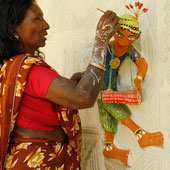The Process: Frame a question
Examine existing literature
Choose an appropriate method
Survey the field (reconnaissance visit and gaining acceptance)
Data collection
Data analysis
Representation
1. The Research Question:
In order to begin, you simply have to articulate which group of people and what aspect of their life interests you and why it is important to study it. That becomes your question or assumption. Contrary to the notion that ethnography is conducted only to study ‘remote’ and ‘obscure’ cultures, it can be employed to study a known community, activity etc. Existing literature may provide cues towards the framing of questions or assumptions.
2. Examine Existing Literature:
It is useful to study existing literature. It helps you uncover the gaps that exist in studies about the topic of your interest. It also prevents the repetition of an existing study. Examining existing literature will help you understand the kind of frameworks that were used by other researchers and these can be adapted into your own research work with modification, if necessary.
3. Which Method is Most Appropriate?
You may choose a method based on the nature of research problem, your own comfort level, skills and professional expertise, type of information required, budget and time available.
You can choose one or a combination of methods from several such as shadowing, observation, interviewing, gathering genealogies, accessing memories, looking at artifacts and content created by participants, photo elicitation etc. Visual techniques like sketching, photography, video, visual diaries, collaborative map-making can be used to enhance your understanding, as ways to elicit information or record your observations etc. Even after you have decided on the method- say photography, you have to still consider how you will use it in the field. A reconnaissance visit to the field site may help in assessing whether the choice of your methods is suitable.
4. Surveying the Field:
A reconnaissance visit will help you understand what to expect when you move to the site full-time for fieldwork. You can use this visit to get your field logistics in place. For example, you may want to meet and build a rapport with certain gatekeepers who control access to the community/ group of people you have decided to study. You may arrange for accommodation for the duration of study and scout for potential participants, collaborators, availability of communication technologies (such as cell-phone recharge, battery charging facilities), health services (health clinic, medical store) etc. This visit will also be useful to determine whether the visual ethnographic method you have chosen for your study is appropriate. For example, you may encounter a situation where photography is considered a taboo and alternate methods will have to be found. It is essential, therefore to understand the context of the research/ study before determining what methods can be used to proceed.
5. How to Gain Acceptance in the Community?
There is no fixed method of breaking the ice and gaining acceptance within the community. This is highly contextual. In the sample projects we discuss along with this course, one designer found it useful to assume the role of a customer while studying the Ittar making community in Chandni-Chowk, Delhi. The community members ran shops and were busy through the day and the shopkeeper-potential customer model was sufficient to break the ice. Later, when there was sufficient acceptance, the designer broached the topic of the study. Another approach would be to offer assistance to someone being studied. While researching a women’s collective engaged in animal husbandry-based livelihood of Ghee (clarified butter) making, a designer offered to design a brochure for them and that acted as an instant ice-breaker. Slowly, the women engaged in a discussion on issues faced in their day to day life that went beyond the ghee-making business. Depending on the context of your study- your research question, the place or community or craft you are studying, you can identify an appropriate ice-breaker.
6. Whether and How to involve Participants?
After gaining acceptance in the community and having immersed yourself in the natural setting of the subject, you may gather a wealth of data. However at best this would be your interpretation of what was happening. By involving an informant, the process of conducting ethnography will become more collaborative. The ethnographic data gathered will be richer as it will have the points of view of both you as a researcher as well as your informant- the researched. This will help in validating your findings. Involving participants and engaging in a collaborative ethnographic practice will help put the power back into the subjects/ community being studied. This is one of the several precautions you could take so as to prevent ethnographic practice from being exploitative.
Often times someone with social standing and who enjoys a lot of respect in a particular group could be a good informant. But one should not stop at that, it is a good idea to get data from ‘extreme deviants’ of the context so that we get a complete and a wholesome understanding of that particular context. Any setting that involves humans has a degree of power dynamics involved as well. It will serve you as designer/ researcher to get both the dominant-normative as well as suppressed-deviant perspectives, while conducting visual ethnography.

The designer makes an attempt to understand the Warli community by working collaboratively with the traditional artist. A new artefact is born through this negotiation and exchange of ideas. Collaborative making is a good way to learn about communities, especially those engaged in arts and crafts.

Prof. Nina Sabnani's process of understanding the significance of Kaavad tradition of storytelling crystalised into a study model.

